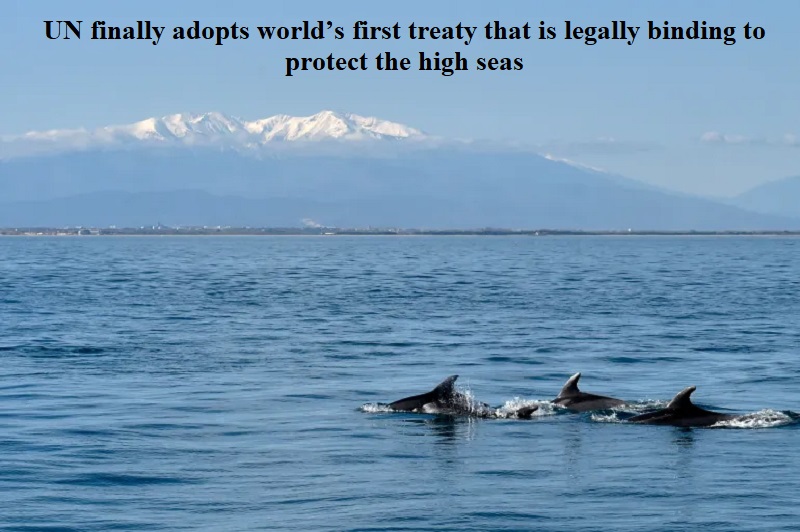
After 15 years of intensive negotiations, the United Nations (UN) has finally adopted the world’s first legally binding treaty to safeguard the high seas and preserve marine biodiversity in international waters.
Known as the Biodiversity Beyond National Jurisdiction Treaty (BBNJ), or the High Seas Treaty, it received approval from all 193 UN member states.
The treaty aims to establish regulations for protecting the environment and resolving disputes related to natural resources, shipping, and other matters in areas beyond any country’s national jurisdiction.
Upon the treaty’s adoption, UN Secretary-General Antonio Guterres commended the member nations, stating, “You have delivered. And you have done so at a critical time.”
Guterres further expressed in a statement that the approval of the text has “pumped new life and hope to give the ocean a fighting chance.” He emphasized that the agreement is crucial for addressing the threats faced by the ocean and achieving ocean-related goals, including the UN’s 2030 Agenda.
The BBNJ treaty is a significant milestone and complements the UN Convention on the Law of the Sea, which has been in effect for three decades. While the Law of the Sea governs seas within a country’s territorial waters and exclusive economic zones, it leaves nearly half of the planet’s surface and two-thirds of the ocean unregulated, particularly concerning the protection of biodiversity.
BBNJ extends the coverage of the Law of the Sea to encompass the high seas beyond national waters or exclusive economic zones.
According to the International Union for Conservation of Nature (IUCN), these areas account for almost half of the Earth’s surface. They are inadequately regulated, poorly understood, and minimally explored in terms of their biodiversity, with only 1 percent of these areas currently under protection, as stated by the IUCN.
The next step for the treaty is its opening for signature in New York, at the UN headquarters, for a period of two years starting on September 20, following a summit on the UN sustainable development goals. The agreement will take effect after it has been ratified by 60 countries.
The treaty plays a crucial role in the global efforts to protect 30 percent of the world’s land and sea through environmental conservation by 2030, a goal established in December.

Post Your Comments